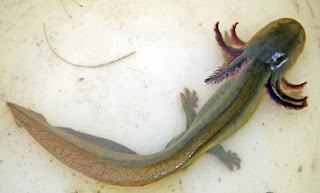Salamanders: A Giant Lizard
Salamanders: A Giant Lizard
As you know that salamanders are a group of amphibians typically and usually characterized by a giant lizard in appearance.
Did you know that front legs of salamanders only have four toes and five on their rear legs, and some species even lack of back limbs, and the interesting part is that they are capable of regenerating lost limbs, as well as other damaged parts of their bodies.
Life span of salamanders is up to 55 years, depending on species, but most live about 10-11 years.
Some of the salamander species are fully aquatic throughout their lives, some take to the water as a intermittently, and others are entirely terrestrial as adults.
Their skin contains the powerful poison tetrodotoxin and they are tend to be slow-moving and have bright warning coloration to advertise their toxicity. Salamanders typically lay eggs in water and have aquatic larvae, but great variation occurs in their lifecycles. In some species and some harsh environments, salamanders reproduce while still in the larval state.
They are not restricted to specific foods, but feed on almost any organism of a reasonable size. Large species such as the Japanese giant salamander (Andrias japonicus) eat crabs, fish, small mammals, amphibians, and aquatic insects.
There are numerous of bacteria and germs re-generate in their mouth you can imagine by this each day numerous bacteria grow in a person’s mouth, The human mouth contains around 500 to 1,000 different types of bacteria with various functions as part of the human flora and oral microbiology. So you can imagine how much bacteria and germs regeneration in salamanders mouth, and how much poisonous it is.




Comments
Post a Comment